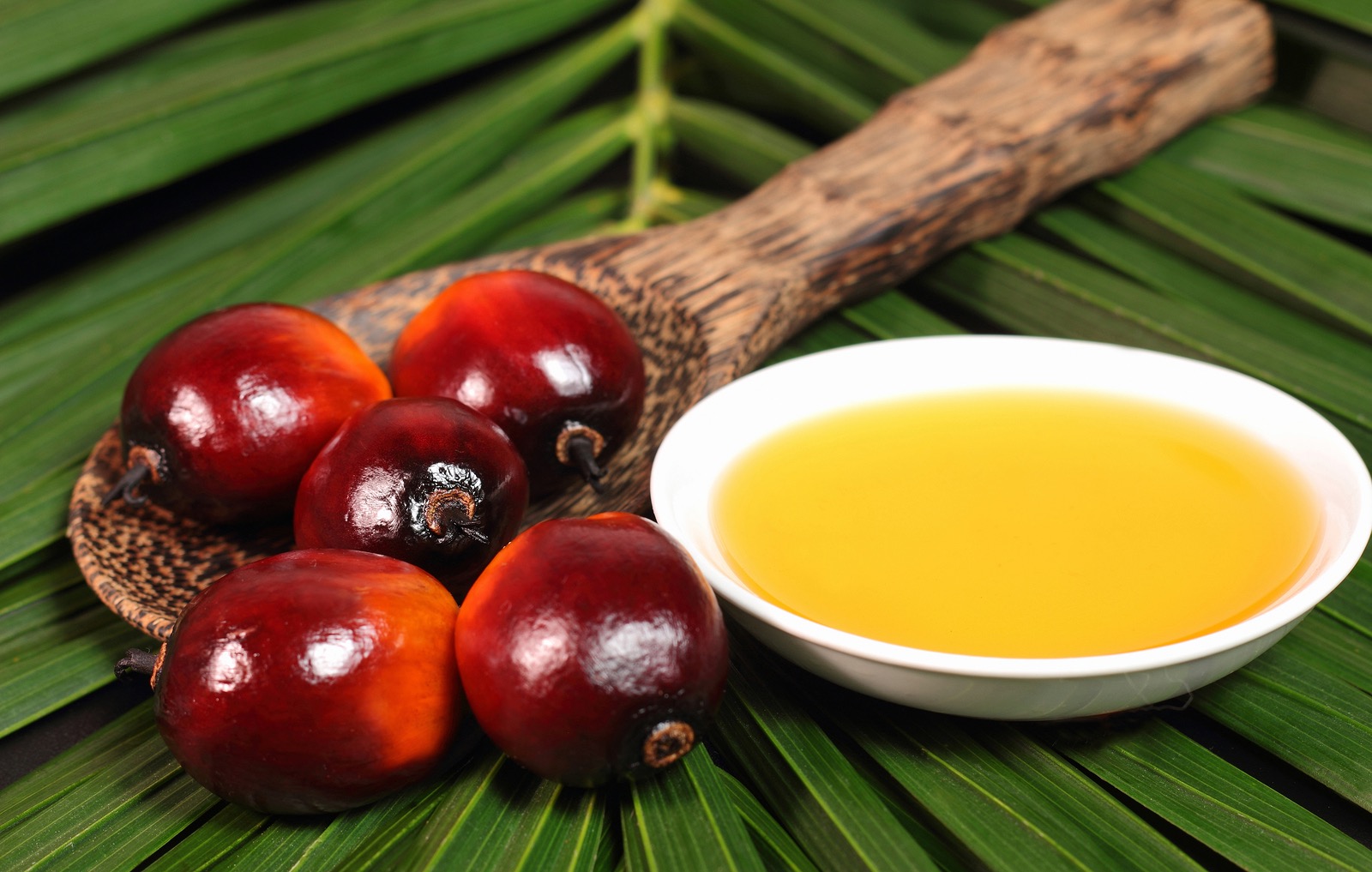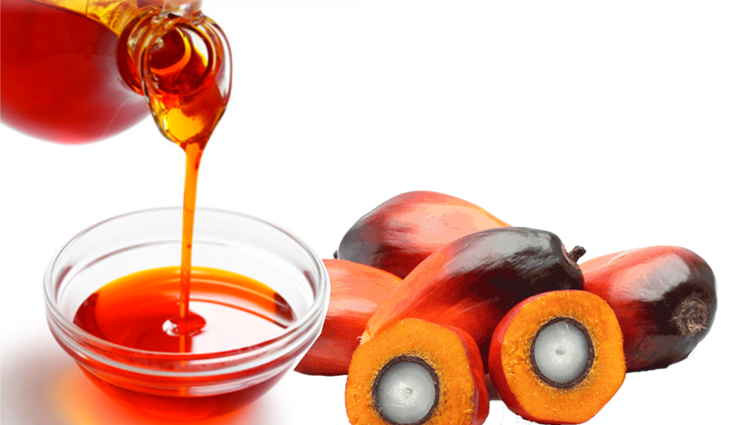All around the world, palm oil consumption is increasing. However, it is a highly controversial food.
On one hand, it’s reported to provide several health benefits.
On the other, it may pose risks to heart health. There are also environmental concerns related to the steady increase in its production.
This article takes a detailed look at palm oil and its effects on health, the environment, and sustainability.

What Is Palm Oil?
Palm oil comes from the fleshy fruit of oil palms. It is sometimes referred to as red palm oil because of its reddish-orange color.
The main source of palm oil is the Elaeis guineensis tree, which is native to West and Southwest Africa. Its use in this region dates back more than 5,000 years.
A similar oil palm known as Elais oleifera is found in South America, but it’s rarely grown commercially. However, a hybrid of the two plants is sometimes used in palm oil production.
In recent years, oil palm growth has expanded to Southeast Asia, including Malaysia and Indonesia. These two countries currently produce more than 80% of the world’s palm oil supply (1).
Like coconut oil, palm oil is semi-solid at room temperature. However, its melting point is 95°F (35°C), which is considerably higher than 76°F (24°C) for coconut oil. This is due to the different fatty acid compositions of the two oils.
Palm oil is one of the least expensive and most popular oils worldwide, accounting for one-third of global plant oil production (1).
It is important to note that palm oil should not be confused with palm kernel oil.
While both originate from the same plant, palm kernel oil is extracted from the seed of the fruit. It’s white rather than red, and it provides different health benefits.
Bottom Line: Palm oil comes from palm trees native to Africa, where it has been consumed for thousands of years. It is semi-solid at room temperature and differs from palm kernel oil in color and nutritional composition.
How Is It Used?

Palm oil is used for cooking and is also added to many ready-to-eat foods in your grocery store.
Its taste is considered savory and earthy.
Some people describe its flavor as being similar to carrot or pumpkin.
This oil is a staple in West African and tropical cuisines, and it’s especially well suited for curries and other spicy dishes.
It is often used for sautéing or frying because it has a high smoke point of 450°F (232°C) and remains stable under high heat (2).
Palm oil is sometimes added to peanut butter and other nut butters as a stabilizer to prevent the oil from separating and settling at the top of the jar.
In addition to nut butters, palm oil can be found in several other foods, including:
- Cereals
- Baked goods like bread, cookies and muffins
- Protein bars and diet bars
- Chocolate
- Coffee creamers
- Margarine
In the 1980s, palm oil was replaced with trans fats in many products due to concerns that consuming tropical oils might jeopardize heart health. However, after studies revealed the health risks of trans fats, food manufacturers resumed using palm oil.
This oil is also found in many non-food products, such as toothpaste, soap and cosmetics.
In addition, it can be used to produce biodiesel fuel, which serves as an alternative energy source (3).
Bottom Line: Palm oil is used in cooking, especially in West African cuisines and curries. It is also found in certain foods, products and fuels.
Nutrient Composition

Here is the nutritional content of one tablespoon (14 grams) of palm oil (4):
- Calories: 114
- Fat: 14 grams
- Saturated fat: 7 grams
- Monounsaturated fat: 5 grams
- Polyunsaturated fat: 3.5 grams
- Vitamin E: 11% of the RDI
All of palm oil’s calories come from fat. Its fatty acid breakdown is 50% saturated fatty acids, 40% monounsaturated fatty acids and 10% polyunsaturated fatty acids.
The main type of saturated fat found in palm oil is palmitic acid, which contributes 44% of its calories. It also contains small amounts of stearic acid, myristic acid and the medium-chain fat lauric acid.
Palm oil’s reddish-orange pigment is rich in antioxidants known as carotenoids, including beta-carotene, which your body can convert into vitamin A.
In fractionated palm oil, the liquid portion is removed by a crystallizing and filtering process. The remaining solid portion is higher in saturated fat and has a higher melting temperature (5).
Bottom Line: Palm oil is 100% fat, half of which is saturated. It also contains vitamin E and antioxidants called carotenoids, which your body can convert into vitamin A.
It May Have Health Benefits
Palm oil has been linked to several health benefits, including protecting brain function, reducing heart disease risk factors and improving vitamin A status.
Brain Health
Palm oil is an excellent source of tocotrienols, a form of vitamin E with strong antioxidant properties that may support brain health.
Animal and human studies suggest that the tocotrienols in palm oil may help protect the delicate polyunsaturated fats in the brain, slow dementia progression, reduce the risk of stroke and prevent the growth of brain lesions (6, 7, 8, 9, 10).
In a two-year study of 121 people with brain lesions, the group who took palm oil-derived tocotrienols twice a day remained stable, whereas the group who received a placebo experienced lesion growth (10).
Heart Health
Palm oil has been credited with providing protection against heart disease.
Although some study results have been mixed, this oil generally appears to have beneficial effects on heart disease risk factors, including lowering “bad” LDL cholesterol and increasing “good” HDL cholesterol (11, 12, 13, 14, 15, 16, 17, 18).
A large analysis of 51 studies found that total and LDL cholesterol levels were lower in people who followed palm oil-rich diets than those who consumed diets high in trans fats or myristic and lauric acid (11).
A recent three-month study looked at the cholesterol-lowering effects of palm oil made from a hybrid of Elaeis guineensis and Elaeis oleifera trees.
In this study, people consumed either 25 ml (2 tablespoons) of olive oil or a hybrid palm oil daily. Based on a 15% drop in LDL cholesterol in both groups, researchers suggested this palm oil could be called “the tropical equivalent of olive oil” (12).
Nevertheless, it’s important to note that an increase or decrease in LDL cholesterol levels alone cannot predict heart disease risk. There are many other factors involved.
However, a controlled study in 1995 suggested that palm oil might help slow disease progression in people with established heart disease.
In this 18-month study, seven of 25 people treated with the oil showed improvements and 16 remained stable. By contrast, 10 of 25 people in the placebo group experienced disease progression, and none showed improvement (18).

Improved Vitamin A Status
Palm oil can help improve vitamin A status in people who are deficient or at risk of deficiency.
Studies in pregnant women in developing countries have shown that consuming red palm oil increases vitamin A levels in their blood, as well as in their breastfed infants (19, 20, 21).
One study found that people with cystic fibrosis, who have difficulty absorbing fat-soluble vitamins, experienced an increase in blood levels of vitamin A after taking two to three tablespoons of red palm oil daily for eight weeks (22).
Palm oil has also been shown to help boost vitamin A levels in adults and young children (23, 24).
In fact, a study from India reported that preschool-aged children who took 5 ml (1 teaspoon) per day had greater increases in vitamin A levels than children who received vitamin A supplements (24).
Bottom Line: Palm oil may help protect brain function, reduce heart disease risk factors and increase vitamin A levels in certain people.
Potential Health Risks
Although most studies have found that palm oil has a protective effect on heart health, others have reported conflicting results (25, 26, 27, 28, 29).
One study was conducted in women with high cholesterol.
It showed that levels of small, dense LDL (sdLDL) — the type of cholesterol linked to heart disease — increased with palm oil but decreased with other oils. However, a combination of palm oil and rice bran oil decreased sdLDL levels (25).
Another study found that sdLDL didn’t change in the group that consumed palm oil, while large LDL particles increased. Large LDL particles are considered less likely to cause heart attacks than small, dense LDL particles (26).
Other studies have reported elevations in LDL cholesterol levels in response to consuming palm oil. However, in these studies, LDL particle sizes weren’t measured (27, 28, 29).
It’s important to note that these are only potential risk factors and not evidence that palm oil can actually cause heart disease.
However, one animal study suggests that consuming oil that has been repeatedly reheated may cause plaque deposits in the arteries due to a decrease in the oil’s antioxidant activity.
When rats ate food containing palm oil that had been reheated 10 times, they developed large arterial plaques and other signs of heart disease over the course of six months, whereas rats fed fresh palm oil did not (30).
Bottom Line: Palm oil may increase certain heart disease risk factors in some people. Repeatedly reheating the oil may decrease its antioxidant capacity and contribute to the development of heart disease.
Read the full story at Authority Nutrition







